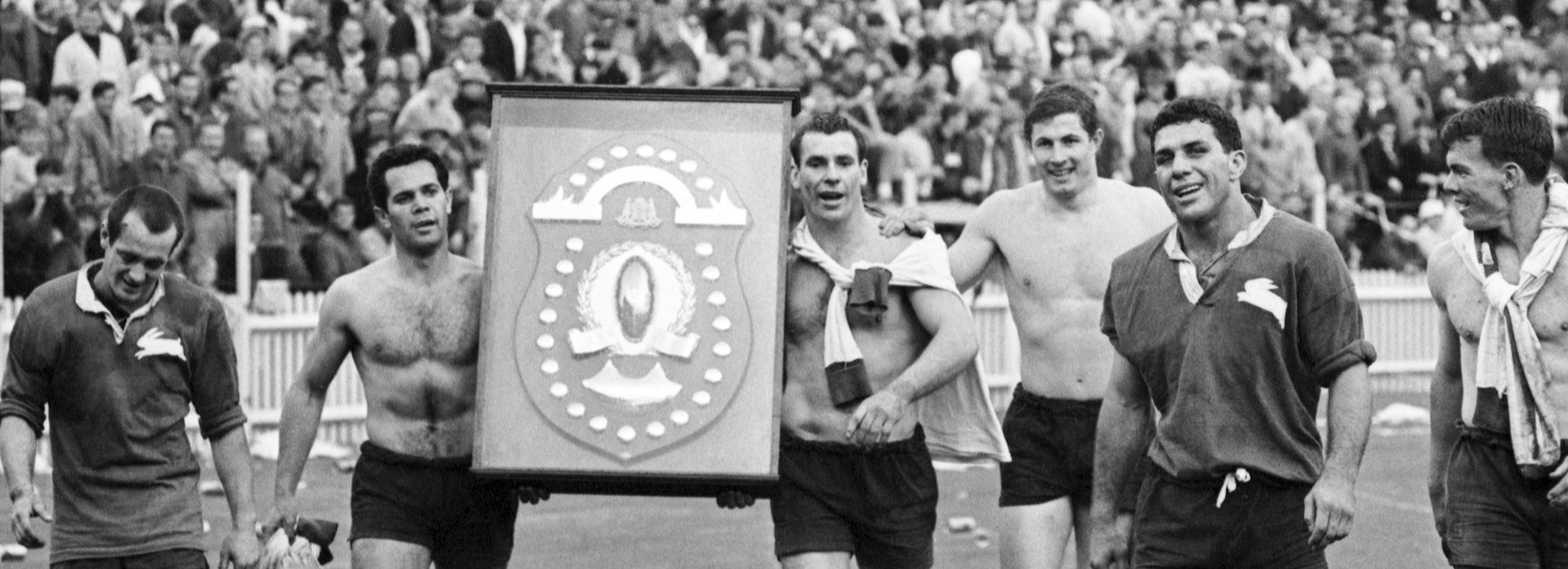
As part of a series of fresh looks at the grand finals of yesteryear, NRL.com revisits the 1967 decider between South Sydney and Canterbury.
It was the end of an era and the start of a new one.
When South Sydney won the 1967 grand final it broke St George's world record sequence of 11 straight premierships, a feat that has never been matched and no other team is likely to even come close to.
For the Rabbitohs, it was the start of a golden run of success - they won four of the next five premierships only being denied five straight by Balmain's remarkable upset triumph on grand final day in 1969.
It's no surprise the South Sydney side which ran onto the SCG on September 16, 1967, was the one to take the mantle from St George.
Nine of the 13 players in cardinal and myrtle would wear the green and gold of Australia and they were coached by their iconic fullback Clive Churchill.
Their opponents, Canterbury, caused an historic boilover the previous weekend when they eliminated minor premiers St George 12-11, conquering a team which still contained future Immortals John Raper, Graeme Langlands and Reg Gasnier, as well as Johnny King, Ian Walsh and Billy Smith.
The 1967 season was also the start of a new era as the NSWRFL welcomed two new teams on what was then Sydney's outskirts, Penrith and Cronulla-Sutherland, while also ending the unlimited tackle rule, replacing it with four per set.
Four years later, the six-tackle rule was instituted.
After finishing second and upsetting Saints in the major semi-final, Souths were heavy favourites in the decider.
The Berries, as they were known before later adopting the Bulldogs moniker, opened the scoring via a George Taylforth penalty goal before Hall of Fame prop John O'Neill burrowed over for the Rabbitohs from close range for a 5-2 lead.
Canterbury lock Ron Raper, younger brother of John, landed a long-range field goal from near halfway after collecting a line drop-out. With the rule changes for 2021, it would be worth two points today, as all field goals were back then.
The underdogs looked set to take a lead into half-time when they were on the attack deep in South Sydney territory but Col Brown's pass to Les Johns was swooped upon by Bob McCarthy.
In one of the most famous tries in grand final history, the big second-rower raced 80 metres to score under the posts.
Despite not crossing for any tries, Canterbury had levelled the scores at 10-10 late in the game.
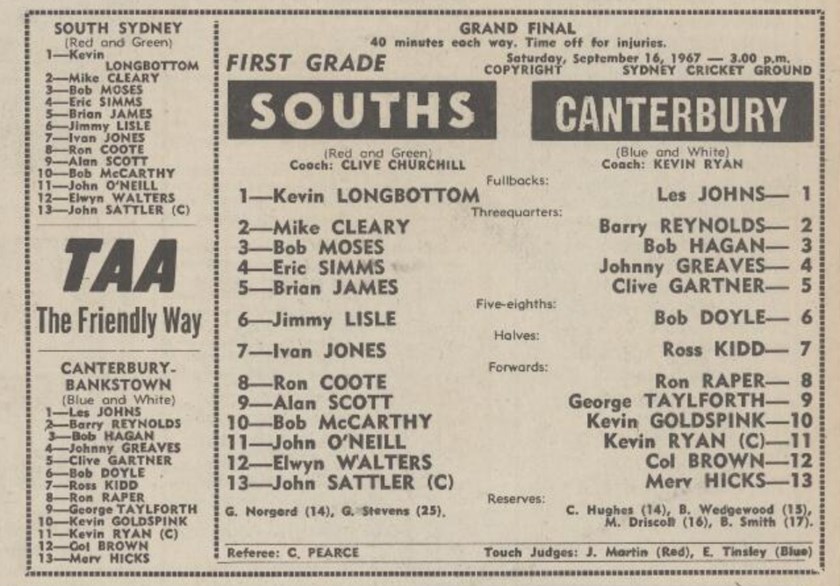
Simms had missed a couple of relatively easy field goal attempts and decades before extra time was introduced, the first drawn grand final in premiership history looked to be on the cards.
However, the Rabbitohs received a scrum penalty four minutes from full-time and Simms made no mistake to boot Souths to glory.
It was South Sydney's first premiership since their 1955 triumph, ultimately bookending St George's run of 11 straight.
Sign up for a free NRL Account to access this video and other exclusive content.
Sign UpAlready have an NRL Account?
Not sure? Learn more about an NRL Account .
Play of the day
Bob McCarthy was known for being a mobile second-rower long before it was fashionable for rugby league forwards to be able to sprint the length of the field.
But his effort to athletically catch a Canterbury pass above his head and outpace a couple of opposing backs to the line is forever etched in Rabbitohs folklore.
McCarthy later said he injured his hamstring during the run and was hampered into a much more limited role for the remainder of the game.
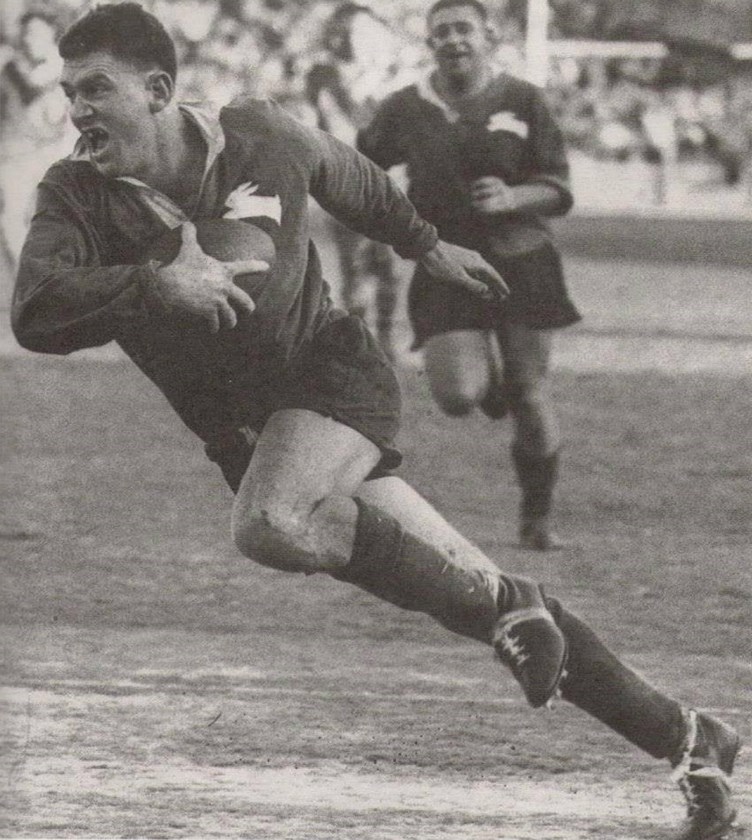
Best player
When the Clive Churchill Medals were awarded retrospectively as part of the Centenary of Rugby League celebrations in 2008, Canterbury fullback Les Johns was given the nod despite playing on the losing side.
Johns was an ever-present threat to the Rabbitohs and would have scored a likely match-winning try after a long break only to be denied by Ron Coote's superb defensive effort.
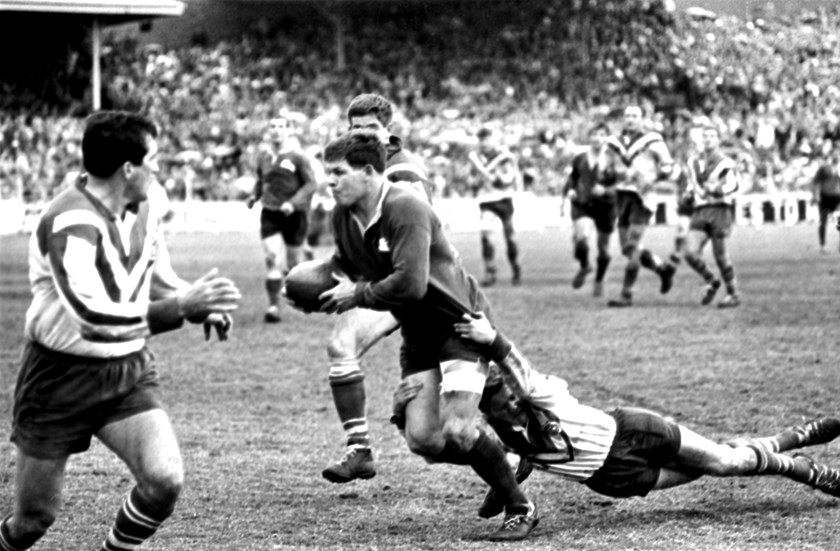
The quote
"I got over the 25-metre line and my hamstring went on me, but I struggled to the try line and I have to say it was a great moment for South Sydney," McCarthy recollecting his magic moment for the Rabbitohs website in 2014.
The what-if moment
Les Johns made a break from deep inside his own half in the second half and the international speedster looked set to score.
But the Rabbitohs had one of the greatest cover defenders of all time and lock Ron Coote motored across the SCG turf to cut down the fullback in a perfect tackle which not only prevented his run but also bundled him into touch.
Unsung hero
Kevin Longbottom is fondly remembered by Souths fans for being one of the biggest kickers of a football of all time.
In this match, the Indigenous fullback took a penalty from near halfway and the ball hit the upright and landed below the crossbar - one touch judge awarded the two points, the other waved it away and referee Col Pearce ruled no goal.
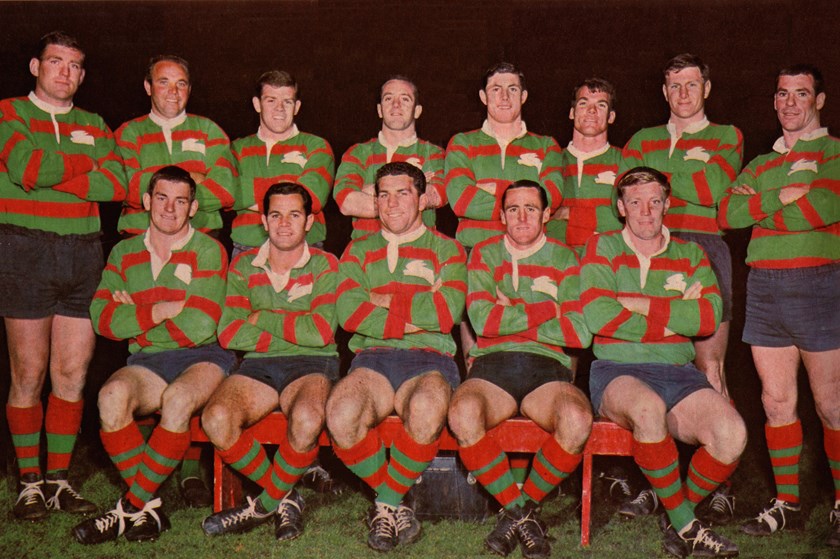
The following year
Rabbitohs captain John Sattler led them to successive titles, collecting the minor premiership on the way to edging out Manly 13-9 on grand final day.
Canterbury fell away dramatically, victorious in only nine of their 22 matches to finish well out of finals contention in ninth place in the 12-team competition.

